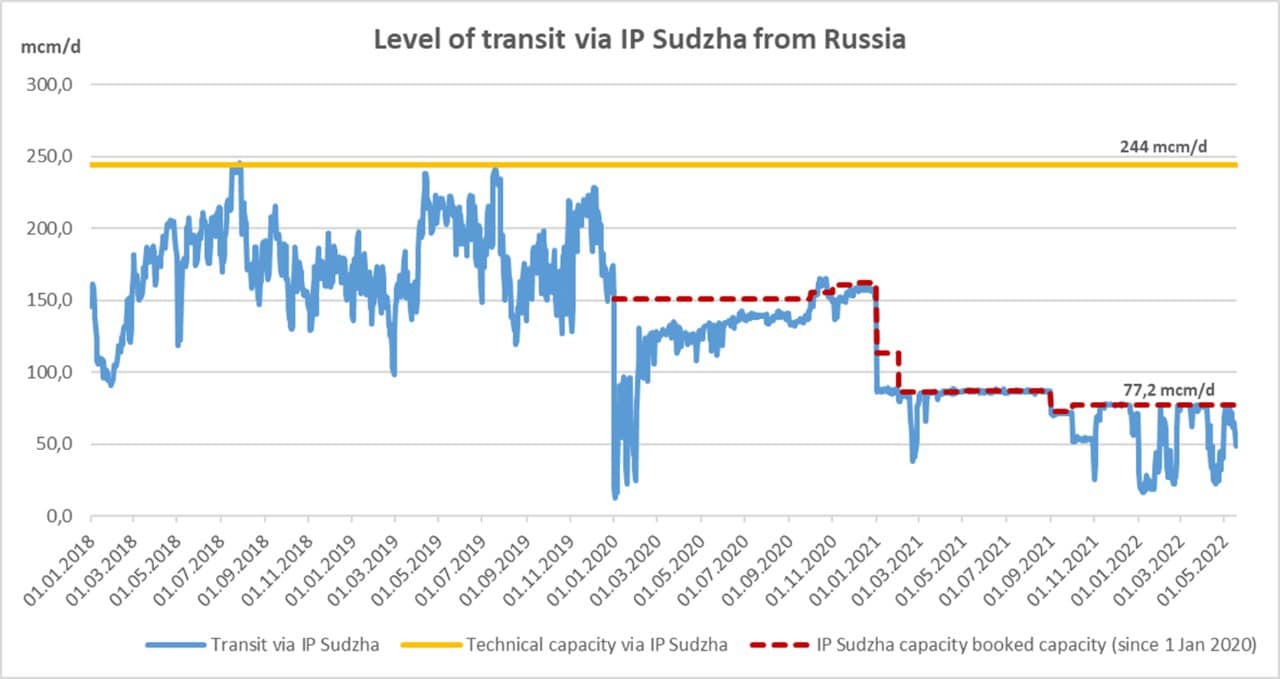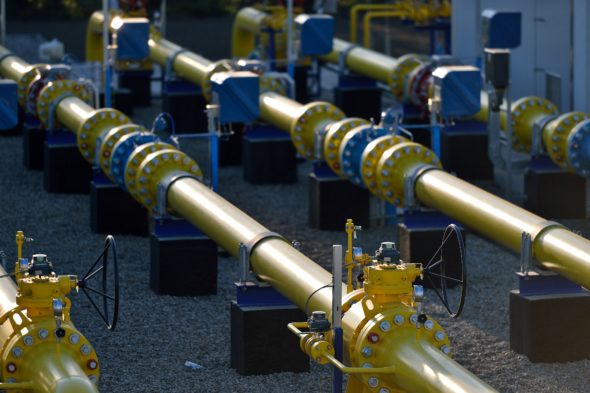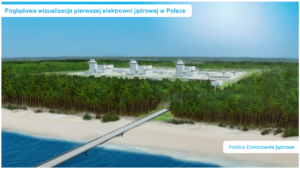It is said that Russians came up with the doctrine of de-escalation by escalation. It’s about using tactical nuclear weapons to conduct a limited attack on an area that is of little importance in order to discourage the opponent from fighting. This doctrine can be used to explain another phase of the game pursued by Gazprom, to which Poland, among others, has fallen prey. The Baltic Pipe needs to be filled to the brim for security reasons, writes Wojciech Jakóbik, editor-in-chief BiznesAlert.pl.
Ruble ultimatum divides Gazprom’s customers
Russia has been reducing the supply of gas to Europe since mid-2021, fueling the energy crisis. Today it has become apparent that this may have been part of preparations for the attack on Ukraine. This game entered its second phase when Russians revealed they expected their clients to pay for the contracts for gas supply via a new payment mechanism, which had not been included in the agreements, but later on imposed by Vladimir Putin in a decree. Countries that did not want to conform, such as Bulgaria, Poland and Finland, were cut off from gas. The situation of the other states, led by the largest customers such as Germany and Italy, whose companies have declared their participation in the new mechanism, is not clear. According to the new rules, the payments will be made in the currently binding currencies, which will then be converted into rubles by Gazprombank. The European Commission withdrew from an initially firm stance and decided that sanctions would be violated only if a ruble account was opened. However, the EC cannot impose any sanctions on companies that, despite its warnings, have opened such accounts. The list incudes such firms as Uniper from Germany or ENI from Italy. There haven’t been any reports on whether the governments of these states have impacted the Commission’s stance, but this should be investigated as it looks probable that the strongest member states abused their power in Brussels to undermine the position of the smaller ones, including Bulgaria and Poland, whose contracts were breached by Gazprom, which will be taken to court over this. The Kremlin will continue to sow division in the European Union.
Escalation on the gas market
The second phase of Gazprom’s ploy may be more than a tactical game. The litigation over the interruption of supplies to some countries, such as Bulgaria, Poland and Finland, can drag on for years, but gas will not continue to flow. As I have written in the past, Gazprom can maneuver to accelerate the decline of gas supply to Europe, for example, in response to the increasingly successful cooperation of the West to reduce purchases in Russia, as evidenced by Greece being able to quickly provide LNG to Bulgaria, and Finland and Estonia chartering an FSRU from the US before the winter. This cooperation is embodied in the REPowerEU program, according to which gas from Russia will be abandoned by 2027. Gazprom may have wanted to raise the bar before the heating season. Its Yamal contract with Poland guaranteed a delivery of 10 bcm of gas this year. However, the fact that Gazprom stopped the deliveries in the fourth month of the year means Poland is short 7 bcm. Bulgarians imported about 2.9 billion cubic meters per year, and also received about 75 percent less. The gas that they will not be able to bring from Russia will be replaced with gas from other parts of Europe and beyond, ensuring security of supply, but also reducing the supply of gas on the market and raising prices. Finland will also be secure, as it will import gas via the Balticconnector pipeline and Estonia. However, it will also compete with Poland for access to Lithuania’s FSRU in Klaipeda. In addition, the volume that has been going via Ukraine has also decreased. After the ruble ultimatum, the Ukrainians stopped the supply via the Sochranivka compressor station as they feared that Gazprom would steal gas to transfer it to the puppet states in the east of Ukraine. Russians then refused to redirect that volume to another route via the Sudzha entrance, hiding behind technical excuses that were debunked by Ukraine. In the past Russians have redirected the gas transfer from Sochranivka to Sudzha without problems, but now they do not want to, as they would rather lower the supply of gas to Europe by dropping the flow through Ukraine. These actions are below the threshold of a gas war, which means a complete cessation of supply. These are tactical moves that are supposed to deter and Eni and Uniper’s reactions reveal that they may be successful. The Russians are using a kind of tactical nuclear weapon in the European gas market to frighten opponents in Europe with a full-blown gas nuclear war. This is how the doctrine of de-escalation through escalation can work on the gas market.

Is Poland safe and what does it mean?
I have written in the past that with the current level of supply to the European market, Poland will be able to import gas from outside Russia this year not only through the LNG terminals in Świnoujście and Klaipeda and the Baltic pipeline, but also from the German exchange through the reverse flow on the Yamal pipeline and through pipelines from the Czech Republic and Slovakia. However, if the supply goes down even more, physical deliveries from outside Russia will count as well. This means it will be necessary to use LNG and the Baltic Pipe at full capacity. Both routes, plus supply via Lithuania, will yield 18 bcm a year (6.3+10+2) from the beginning of 2023. In this context, it should be added that sanctions against companies subject to court-supervised management in Germany (Astora, Gazprom Germania) and sanctions in Poland (EuRoPol GAZ), which include the transmission infrastructure of the Yamal gas pipeline in these countries, may make it impossible to use this pipeline, and thus its reverse flow in Poland, which gives access to 4.5 billion cubic meters a year. It was no coincidence that just before the Russian Yamal sanctions, the German Ministry of Economy declared a state of emergency on the gas market and planned a program to limit gas consumption in the winter. It is worth following the example of Germany, which takes into consideration the possibility of interruptions in supply to its market. This is a possible scenario in case of further de-escalation by escalation, which could limit the availability of gas in our country as well. Gas consumption in Poland is 20 billion cubic meters. This means it will be possible to meet this demand without any problems if the storage facilities, which can hold 3,3 bcm, are drained. In view of the shortage of gas on the European exchange, which is possible in case Russians escalate further, Poland will not have to introduce restrictions on gas consumption, which PGNiG officially takes into account when it comes to the industry, if it makes full use of non-Russian gas supply routes with the Baltic Pipe in the lead. This means the pipe should be fully booked for security reasons, even if the market suggests that the destruction of demand caused by the energy crisis may in reality decrease the demand for gas, which had been suggested by PGNiG’s board, which had to justify the fact that the contracts for deliveries from Norway were not enough to cover the pipe’s capabilities. If the worst case scenario does not come true, the Poles will easily meet the gas demand with physical supplies from outside Russia and those from the European exchange. One can even imagine a scenario in which more European countries succumb to the ruble ultimatum and join the new mechanism of payment in rubles, increasing the supply on the European market. However, if the worst-case scenario comes true, only non-Russian sources will be left, and those caught up in the crisis without additional gas at hand will suffer the consequences, like Germany, which put some of its gas storage under the control of Gazprom Germania and entered the heating season with record low reserves due to deliberate Russian actions to escalate the energy crisis. In this case, it may be necessary to limit gas consumption, introduce rationing mechanisms, and provide additional subsidies to regulate prices. It is not accidental that Austria and Germany have already introduced appropriate legislative solutions in this regard. This will still ensure security of supply, but with certain economic sacrifices, which will be smaller if alternative supply routes, with the Baltic Pipe in the lead, are fully exploited. These costs will probably be lower than the price of selling the possible surpluses from the Polish portfolio in case of the optimistic scenario.
Fill it up
Therefore, in the face of Gazprom’s schemes and attempts at de-escalating by escalating on the gas market, we should hope for the best, but expect the worst: prepare the gas market for the possibility of zero gas supplies from Russia to Europe, so that the threat of such developments does not bind the hands of Europeans in response to the continuation of the Russian invasion of Ukraine. „A Pole is wise after the event,” says an old adage, but this time the Pole was wise before and filled up his gas storage, in contrast to Germans who allowed Gazprom to control this process. The Pole should also be wise before the upcoming heating season and prepare for the worst-case scenario hoping that it will never come true. This is a clear argument for filling the Baltic Pipe to the brim. „PGNiG is in talks with partners operating on the Norwegian continental shelf to effectively achieve the goal of making full use of reserved capacities. The company will reveal the results of these talks,” PGNiG said in a statement on 20 May.









